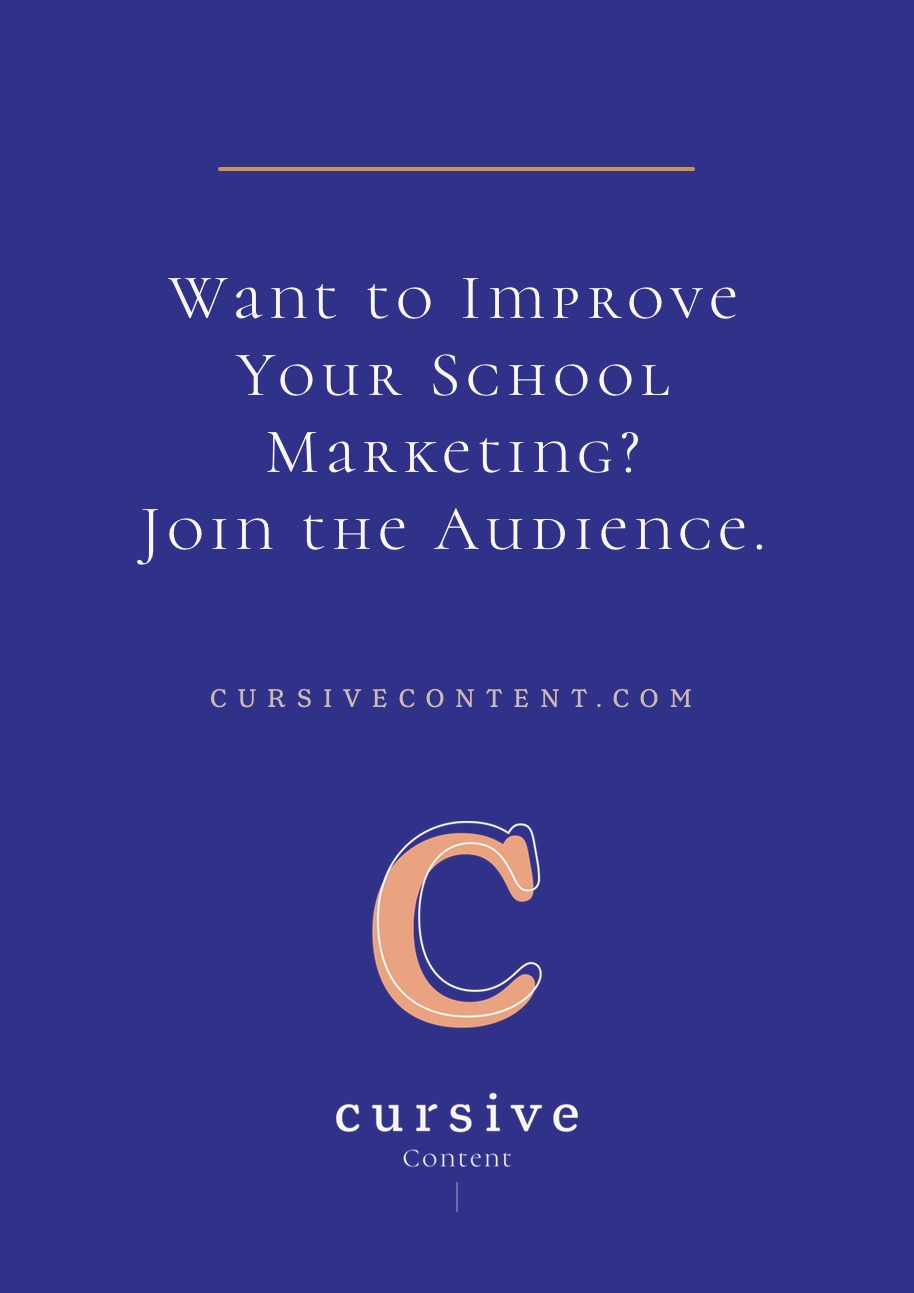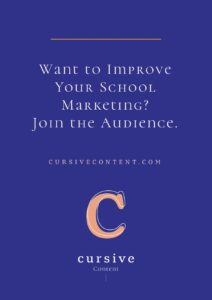Want to Improve Your School Marketing? Join the Audience.

You’ve gathered the stats about your ideal student. You know their age, their interests, and their GPA. Knowing the general details about your audience, however, is just the beginning. There is an extra step that will help you form an authentic understanding of your ideal student, and ultimately, to tell a stronger story and create content that connects. So if you feel stuck, stagnant, or out of touch, it’s time to use that information to actually connect with and become part of your audience.
Here’s how to better connect with your audience by becoming part of your audience:
GO WHERE THEY SPEND TIME ONLINE
Where does your ideal student spend their time online? You might think you know, but social media and popular websites are constantly in flux, and it’s important to stay up to date with what’s popular with your audience.
Once you know your audience’s preferred social networks, you want to explore them – as a user first, then a marketer. This is especially important if you are not a current user of that network. When you understand how your audience is using the network, then you can understand the role that you can play there—if any. But even if you never establish a presence on the network, getting a glimpse into what’s popular will benefit your school marketing.
The same goes for any online news source, website, or blog. Browse around to understand what your audience is interested in and who they’re interested in learning it from. Your role as audience member allows you to observe, and pick up on any useful commonalities, which you may be able to use in your marketing. Pay attention to everything, from topics to functionality to colors. The experience of observing from the perspective of your ideal student can help you step out of an internally focused marketing mindset.
What is the best way to do this?
- Check out the power players. To quickly understand an online network’s culture, check out the profiles or accounts of the most-followed users or brands.
- Note how communication flows. How are the power players sharing information? How are they connecting and communicating with other users? What seems to be trending? Are there in-depth articles or quick video sound bites?
- Do an informal audit. Note any interesting functionality, color schemes, and content formats that might spark ideas for your school’s content.
GO WHERE THEY SPEND TIME IN REAL LIFE
It can be easy to forget that your marketing personas aren’t real people. That the statistics you’ve compiled about students and families, while accurate, are also general. Having these details written up in neat little packages doesn’t mean you know the actual individuals who make up your audience. And that’s why it’s important to meet real-life members of your audience. In person.
This might mean that you:
- Attend events frequented by your audience
- Visit the places your audience likes to spend time in real life
- Attend recruiting fairs
- Venture into the dining hall
When you do this, seize the opportunities to talk with current and prospective students and their families. One-on-one. Person-to-person.
Meeting real-life audience members will help you see a face behind the data on your marketing spreadsheets. It will help you apply a deeper level of understanding and authenticity to your content. It’s that content that will help you create a connection with your ideal student— even the ones that you never have the chance to share a coffee with.
GO BACK TO YOUR OFFICE
Now that you’ve had a chance to spend time amongst your audience, go back to your office and review your school’s current communications. Does your content feel like a good fit for the ideal students you’ve just spent time with?
This doesn’t mean you have to change your school’s voice to talk in the language that your audience uses (in fact, this is often a really bad idea). But you do want to be sure that you’re talking to them in a way that is authentic to you and connects with them. You don’t have to redesign your school website to look like their favorite blog, but you might find that you’ve been inspired to try different content formats that you’ve noticed your audience enjoys.
Spending time as an observer can help you better understand who you’re trying to reach, which will help you create stronger school content, which can make both potential and current students feel heard and understood. So go ahead—join your audience.
Ready to create and share a powerful school story? Cursive Content’s storytelling process will transform your school messaging from scattered to strong — and then help you tell that story to your many audiences. Learn more about how to work with us.
MORE ARTICLES
-
 What Is Your Private School’s Bold & Unifying Big Promise?
What Is Your Private School’s Bold & Unifying Big Promise? -
 AI Writing Prompts to Power Private School Storytelling
AI Writing Prompts to Power Private School Storytelling -
 When to Outsource Your Private School Content Marketing to an Expert
When to Outsource Your Private School Content Marketing to an Expert -
 3 Unique Ways to Attract Dream Families with Content
3 Unique Ways to Attract Dream Families with Content -
 4 Quick & Easy Ways to Improve Your School’s Emails
4 Quick & Easy Ways to Improve Your School’s Emails -
 The Best Content Marketing Resources for Independent Schools
The Best Content Marketing Resources for Independent Schools -
 How to Create Qualified Leads for Your Private School
How to Create Qualified Leads for Your Private School -
 10 School Storytelling Mistakes That Cause Your Audience to Disconnect
10 School Storytelling Mistakes That Cause Your Audience to Disconnect

